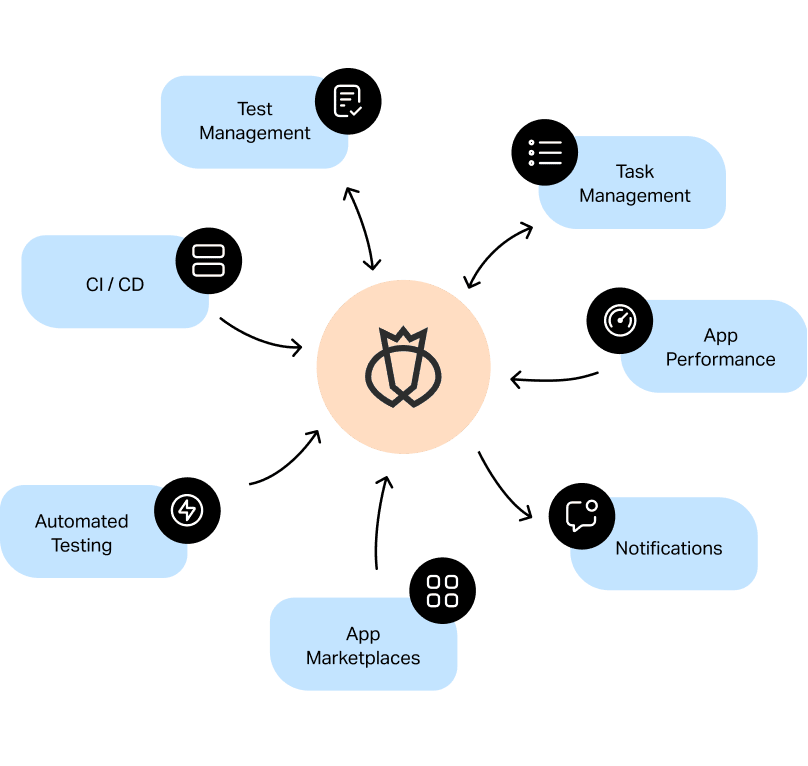From Handbook to Automated Testing: A Comprehensive Overview to Transitioning Efficiently and Successfully
In the realm of software application screening, the change from handbook to automated procedures has actually become an increasingly crucial transition for companies seeking to improve efficiency and accuracy in their testing techniques. As technology remains to advance, the demand for seamless and reliable automatic screening methods has actually never ever been more important. The journey from handbook to automated testing is not without its challenges, but when approached tactically and with a clear plan in mind, the advantages can be considerable - automation testing. In this thorough guide, we will certainly check out key steps and considerations vital for an effective shift, from the first option of devices to the assimilation of automation into existing operations. Stay tuned to discover the insights that will certainly help pave the way for a smoother and a lot more efficient screening procedure.
Advantages of Automated Checking
Automated testing offers countless advantages, enhancing performance and precision in software program growth processes. Automated tests can be run concurrently on several gadgets and running systems, substantially speeding up the testing stage contrasted to hand-operated screening.
Furthermore, automated testing makes sure a greater level of accuracy in finding flaws. Consistency in testing is additionally enhanced, as automated examinations implement the exact same actions exactly each time they are run.
Picking the Right Tools

To start with, evaluate your objectives and needs. Understand the range of your project, the technologies involved, and the ability of your group. This analysis will certainly aid you establish the features and capabilities you need in your testing devices.
Second of all, take into consideration the compatibility of the tools with your existing systems and procedures. Seamless combination with your current software program advancement lifecycle is crucial to guarantee a smooth transition to automation.
Additionally, examine the scalability and versatility of the tools. As your testing needs progress, the tools must have the ability to adapt and fit adjustments effectively.
Lastly, element in the assistance and neighborhood around the devices. When carrying out automated screening, durable assistance and an active user area can offer beneficial sources and help. By carefully thinking about these aspects, you can select the right tools that line up with your needs and established the phase for a successful transition to automated screening.
Creating Reliable Test Scripts

When crafting examination manuscripts, it is vital to consider the particular needs of the software being evaluated and ensure that the manuscripts attend to all critical performances. Detailed and clear calling conventions for test scripts and test instances can boost readability and maintainability. Additionally, including mistake handling systems within the test scripts can help in recognizing and dealing with issues promptly.
In addition, arranging test manuscripts into modular parts can boost reusability and scalability, decreasing redundancy and boosting effectiveness in test manuscript maintenance. Routine reviews and updates to evaluate scripts are critical to maintain rate with progressing software program requirements and capabilities. By adhering to these principles, testers can produce robust and efficient test scripts that contribute considerably to the success of automated testing processes.
Integrating Automation Into Workflows
By perfectly integrating automated screening tools like Selenium or Appium right into the software program growth lifecycle, teams can attain faster feedback on code adjustments, leading to quicker pest discovery and resolution. This integration enables for continual screening throughout the development process, making sure that any type of issues are determined early on, resulting in greater software program top quality. Proper combination of automation tools calls for partnership between advancement, screening, and operations teams to establish a unified operations that optimizes effectiveness and efficiency in delivering top notch software program items.
Making Certain a Smooth Transition
Successfully transitioning to automated testing involves careful preparation and careful implementation to minimize disruptions and make best use of performance in the software advancement procedure - automation testing. To ensure a smooth transition, it is necessary to start by performing a detailed evaluation of the present screening processes and determining areas where automation can bring one of the most considerable advantages. Involving with all stakeholders beforehand at the same time, consisting of developers, testers, visit site and project managers, is critical for garnering assistance and buy-in for the automation initiative
Interaction is vital during this transition stage. Clear communication of the goals, benefits, and assumptions of automated testing helps to handle any kind of resistance or problems that may develop. Furthermore, providing adequate training and resources for group participants to upskill in automation tools and strategies is crucial for making certain an effective shift.

Verdict
To conclude, transitioning from manual to automated screening supplies many advantages, including raised efficiency and integrity. By selecting the appropriate tools, writing reliable examination manuscripts, and incorporating automation effortlessly into workflows, organizations can make certain a successful and smooth shift. It is vital to welcome automation as an important possession in software program screening procedures to boost overall quality and productivity.
In the realm of software program testing, the shift from handbook to automated procedures has actually come to be an increasingly crucial shift for organizations looking for to boost performance and precision in their screening techniques. Automated tests can be run simultaneously on multiple gadgets and running systems, considerably speeding up the testing phase compared to hands-on testing. Uniformity in testing is also enhanced, as automated examinations implement the same steps exactly each time they are run.To make sure the successful application of picked screening devices, the creation of reliable test scripts plays an important duty in verifying the performance and performance of automated processes - automation testing. By complying with these principles, testers can develop robust and effective test scripts that add significantly to the success of automated check that testing processes